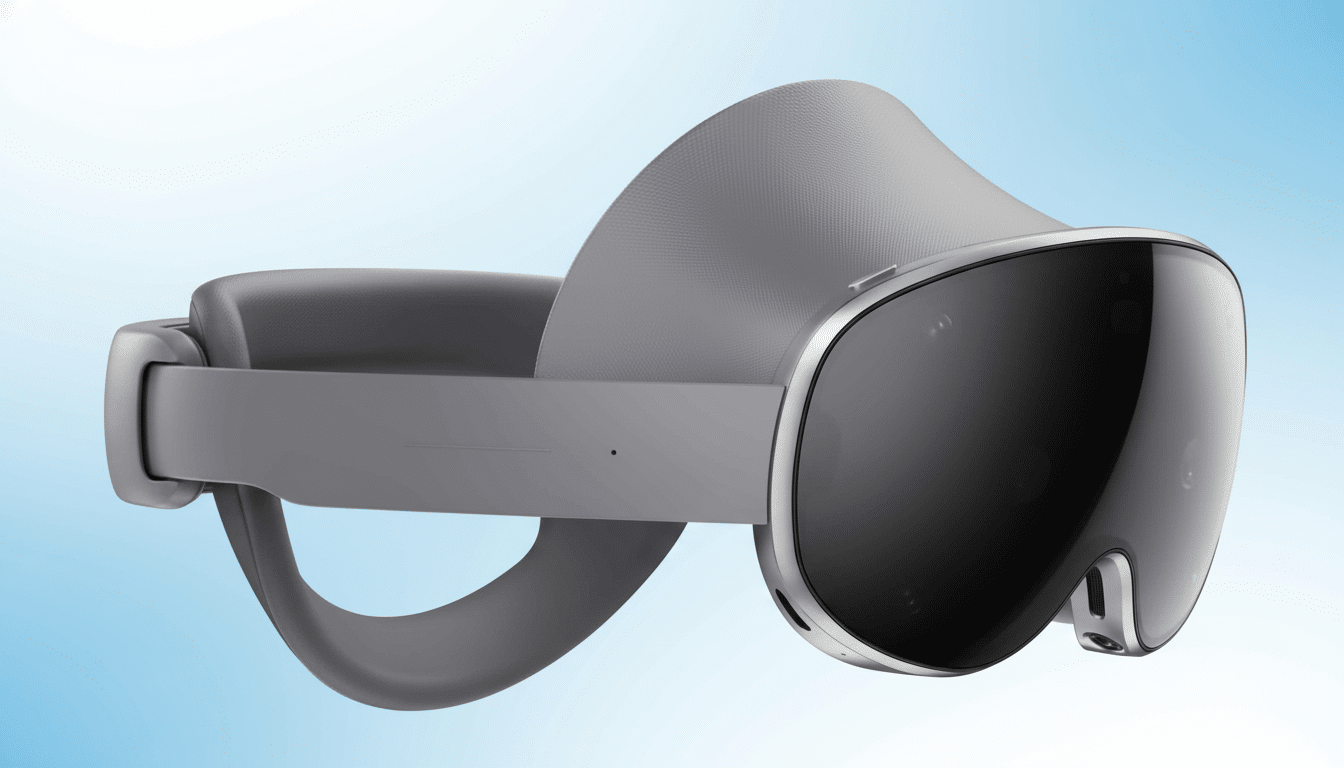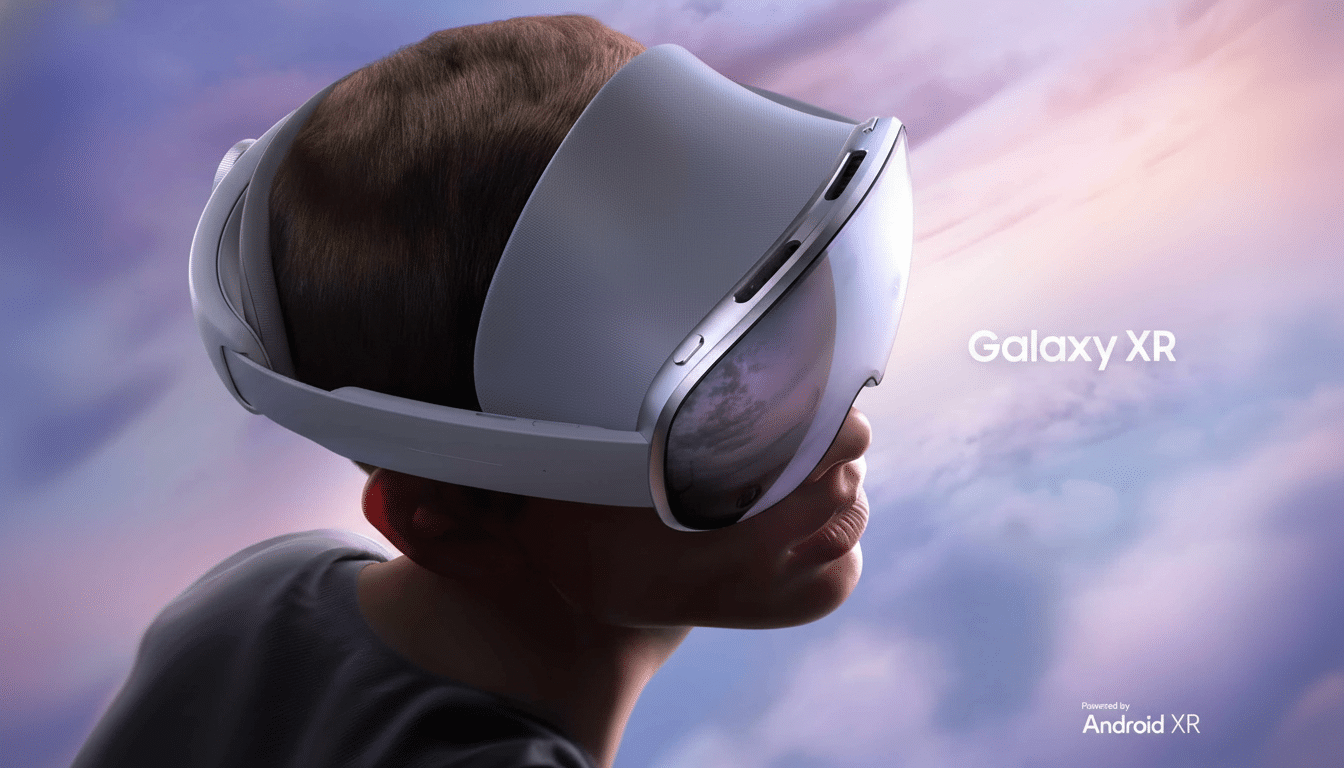Samsung’s debut mixed reality headset is a declaration of its intentions. After spending some time wearing the Galaxy XR at a New York demo, the takeaway is obvious: This is a capable, polished debut — and a deliberate prelude to something lighter, more wearable, far more mainstream. It’s priced at $1,799 and was built in collaboration with Google and Qualcomm; it serves as a flag planted for Android XR but also, more quietly, a ticket-puncher for the smart glasses era.
Be Practical And Prioritize Longevity With Design And Comfort
The Galaxy XR skews toward balanced ergonomics rather than brute-force specs. A glass front holds a bank of outward-facing cameras and sensors, while a cushioned strap with a rear dial evenly distributes weight. Relocating the battery to a separate pack that connects via a proprietary cable is part of what makes it wear lighter on the face and feel lighter for extended play sessions. Plan on getting about two hours of mixed use for each pack, according to Samsung.

Inside, dual panels provide 3,552 x 3,840 per eye at a maximum of 90Hz, with the whole system ensuring automatic interpupillary and focus adjustment via built-in eye-tracking. Open-ear speakers go over your ears to provide a spatial audio experience without isolating you from the world around you, while Bluetooth support includes earbuds, gamepads, keyboards and mice. You can always take a break from the action and pop them open without removing your headset, with removable face pads.
Hand and Eye Tracking Serve as the Interface
The Galaxy XR is intended to work with or without a controller. Several external cameras perfectly track your hands — for pinch, drag and two-handed zoom gestures — while eye-tracking allows look-and-select that feels completely natural right away. A pinch is your click; a long pinch-and-hold pulls windows around; a twisted palm-pinch brings up contextual menus. The combination of those things makes moving apps around feel even more natural than, say, waving wands around.
Color pass-through looks sharp and responsive, delivering believable AR moments. You can look at an object in the real world and, in a spontaneous moment of visual search, see that thing. It’s not for streetwear, but the latency and clarity are good enough to make productivity in mixed reality and quick reference checks feel practical at home or in an office.
Android XR And Gemini Anchor The Experience
This is as much a vision of software from Google as hardware from Samsung. So Android XR doesn’t just borrow some of the familiar conventions of Android (combined with, obviously, spatial controls) but it shouldn’t surprise you to hear that a large proportion of its own services and apps are not in short supply either. There’s very little skinning here — closer to stock than the classic Samsung interface, which emphasizes the platform play.
Gemini is woven throughout. Keep the multifunction button pressed and the assistant has full context of what you are seeing, allowing for fast, natural language help that doesn’t require explanation. In demos, Google Photos was able to convert standard images into compelling stereo scenes on a device. Google Maps provided dynamic, globe-to-street flyovers and AI-sewn interior reconstructions of certain venues. YouTube covered immersive 360 video and early stereoscopic conversions, to which will be added more extensive support in the coming months.
Most of the big open questions are platform ones: Will Google license its Android XR software broadly to other OEMs? How much customization will partners be able to make, and how frequently will adjustments be permitted?

Google has promised that more details are on the way, suggesting bigger ambitions than a single headset.
Gaming And Apps Gain Real Traction On Galaxy XR
The pitch is a strong one for gamers. Galaxy XR works with games on SteamVR when connected to a compatible PC. Steam Link and Moonlight are options for 2D play, and the Google Play library runs in resizable windows. Bluetooth controllers pair seamlessly, and Samsung’s VR-style controllers are available as an optional add-on rather than in-box must-haves — again, part of the hand-first UI strategy.
Under the hood, Qualcomm’s newest XR2+ platform runs the show, optimized for high-resolution, high-frame-rate mixed reality workloads. The result is a headset that feels comfortable multitasking — watching a video, pinning a notes app and chatting with Gemini — without friction that sends many first-gen attempts off the rails.
Price And Market Reality Check For Samsung Galaxy XR
At $1,799, Samsung is pricing its headset at just under half the cost of Apple’s and well above mass-market models like Meta’s Quest 3. That positioning matters. Even industry observers like IDC and CCS Insight peg annual AR/VR shipments in the single-digit millions, while analyst reporting has suggested that Apple has sold fewer than a million early headsets — a clear sign that price, comfort, and usability need to converge to expand beyond enthusiasts.
The Galaxy XR’s wager is ecosystem. With Android XR, existing apps on Android, Steam pipelines and an AI assistant deeply embedded in the OS, it provides a much clearer runway for developers to succeed, and users with a wider playground than most newcomers can hit on day one.
Why This All Seems Like a Prelude to Smart Glasses
Lightweight smart glasses are the endgame, and Samsung is not quiet about that. Collaborations with eyewear brands like Gentle Monster — and industry chatter about larger collaborations to come — signal the not-too-distant future in which Android XR and Gemini step off the couch and into our everyday. In this context, Galaxy XR is what the developer kit you’d actually want to use looks like: Polished enough to enjoy today; strategic enough to seed the content and UX patterns for tomorrow’s glasses.
And if your tastes run to high-end VR loving with credible AR and its eye on the platform future, this headset fills out nicely. But its greatest accomplishment may be what it makes possible next. The revolution isn’t the visor — it’s the runway it paves for when mixed reality is as easy as sliding on your favorite frames.

